Here at DC Histories, we try to make sense of the continuity that perplexes, befuddles, and intimidates. We discuss what worked and what didn’t. This week, we’re talking about the craziest miniseries DC ever published: the DC Challenge.
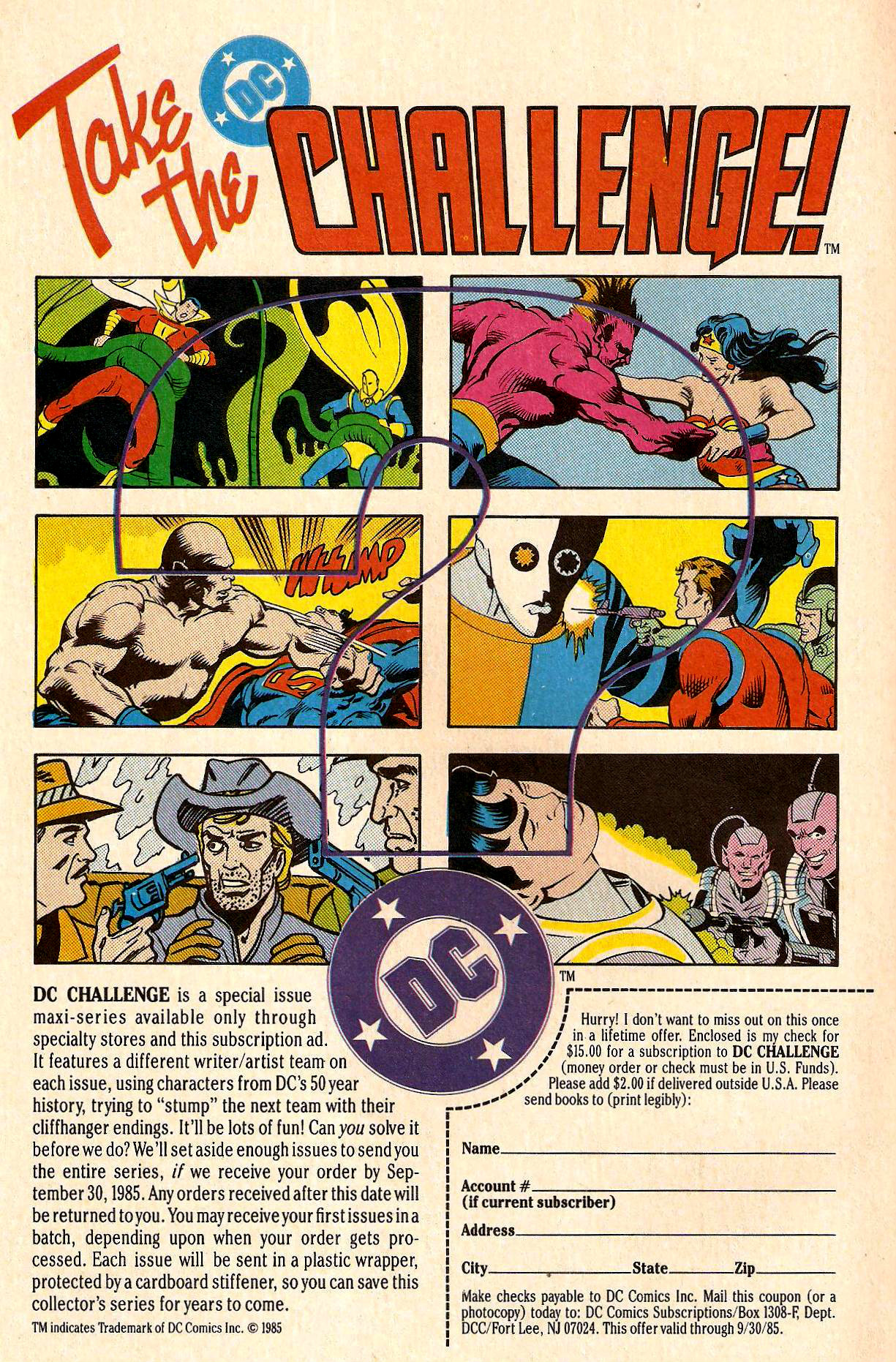
DC Challenge In-House Ad (1985)
This 12-issue miniseries started with a simple concept. Legend has it that during a hotel party taking place at the 1983 San Diego Comic Con, several writers escaped to the roof to get some fresh air. Len Wein, Gerry Conway, Mark Evanier, and Marv Wolfman took advantage of this late night reprieve and spun an idea for a miniseries. Mark claimed to have the initial seed of the idea and credited Gerry for coming up with the name. It was a round-robin story with each issue written and drawn by a different creative team. The entire thing would be one continuous story and each issue had to end with multiple cliffhangers that it was up to the next writer to resolve. The final issue would be a big jam piece that would tie up the loose ends that would inevitably result. The series would be called the DC Challenge and its catchphrase would be “Can you solve it before we do?”
Somehow, this idea was okayed by the higher ups at DC and the first issue was released two years later. Mark Evanier took on the job of creating the first issue. Alongside legendary penciler Gene Colan and inker Bob Smith, Mark set out to give the later writers and artists plenty of plot threads with which to weave stories. There were celebrities seemingly returned from the dead, demons rising out of people’s bodies, the Riddler leaving puzzles all over town, and a mysterious device left on the surface of the moon. In the end, it was a serious of seemingly random numbers left by a turbaned alien that perplexed everyone.
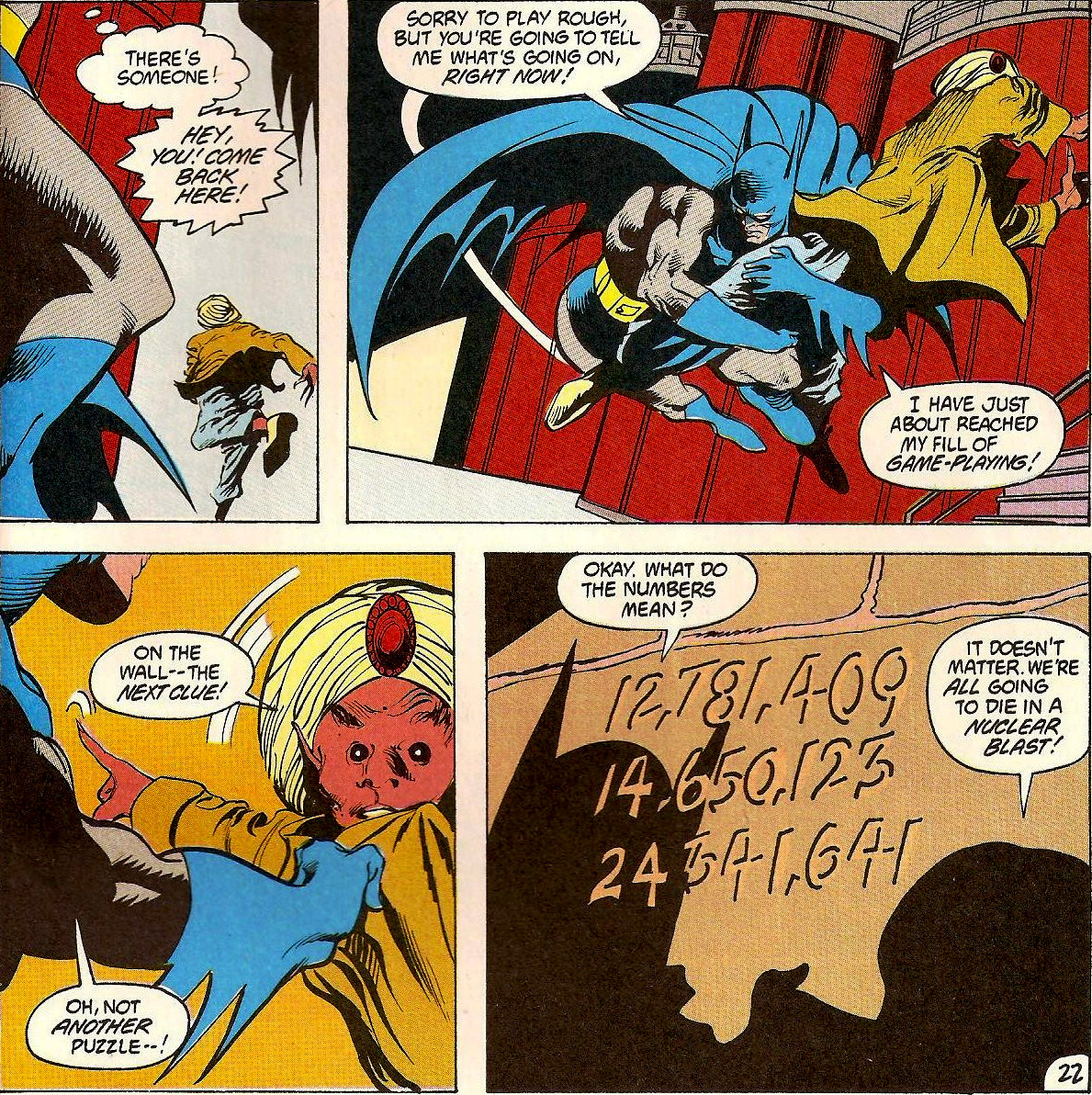
From DC Challenge #1 (1985)
Those pesky numbers would go on to haunt many a future writer of this series.
With the first issue complete, it was now time to hand off the reins to the next writer / artist team. This time, it was Len Wein and Chuck Patton who were up to bat. The story opened with Len and Chuck going over the events of the first issue. This was helpful as both a recap and as a piece of meta commentary in a story that was really one long in-joke.
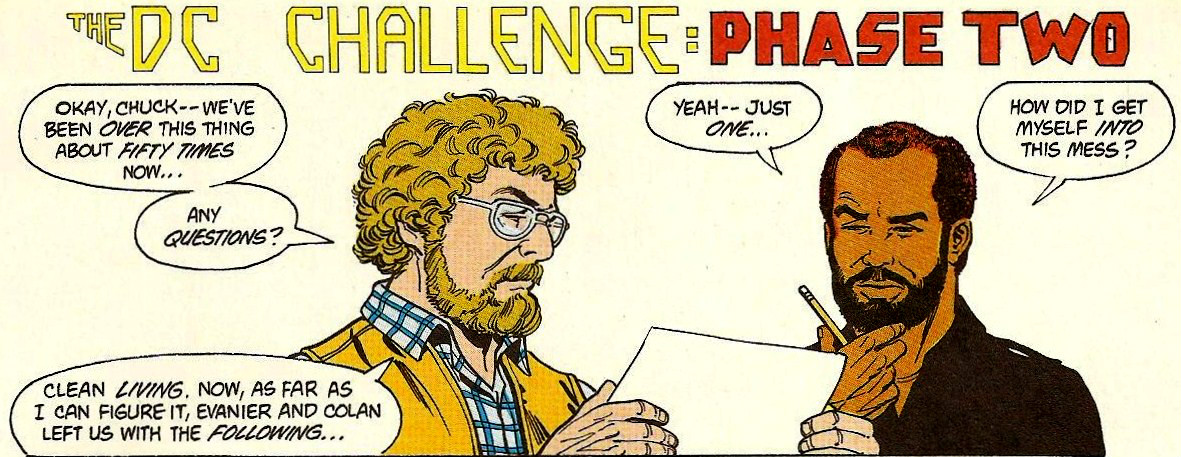
From DC Challenge #2 (1985)
Most of the fun of this series came from seeing what strange scenario each successive creative team put the characters in and which characters would be used. Writers began pulling some Z-list characters into the mix because there was no way they’d ever be able to use them elsewhere. Len Wein used B’wana Beast, a completely forgotten character whose only previous appearances had been in two issues of Showcase in 1967. He also shoved Jonah Hex into the present day.
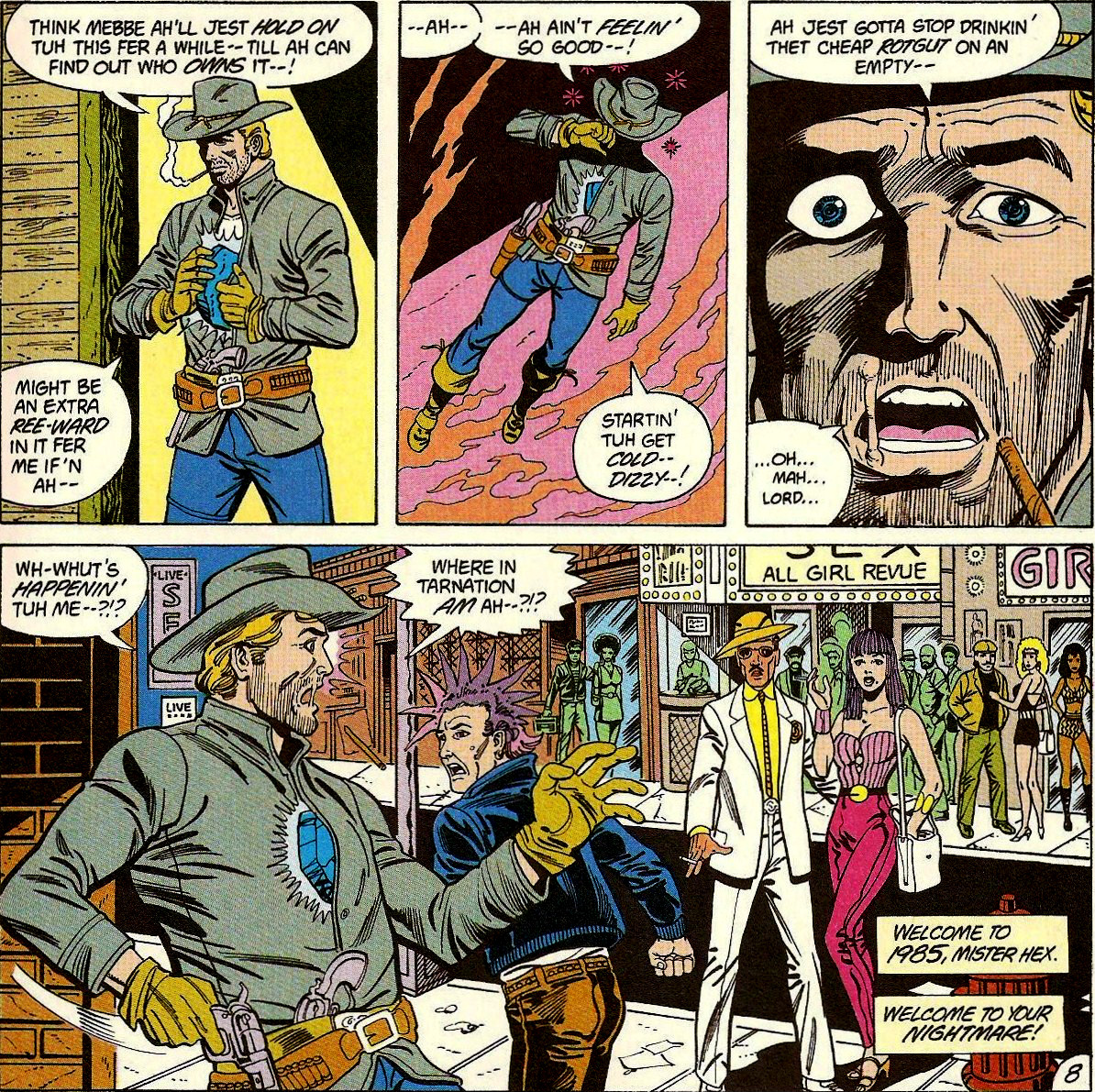
From DC Challenge #2 (1985)
From there, the story got stranger. The Viking Prince got involved. Adam Strange showed up for a few issues. Plot lines were started and then abandoned. Aliens took over the world. Superman’s secret identity was set to be published in the Daily Planet. By the way, that particular plot thread was completely forgotten about until the final issue of the series. Paul Levitz dragged Detective Chimp into this mess and had Deadman take him over.
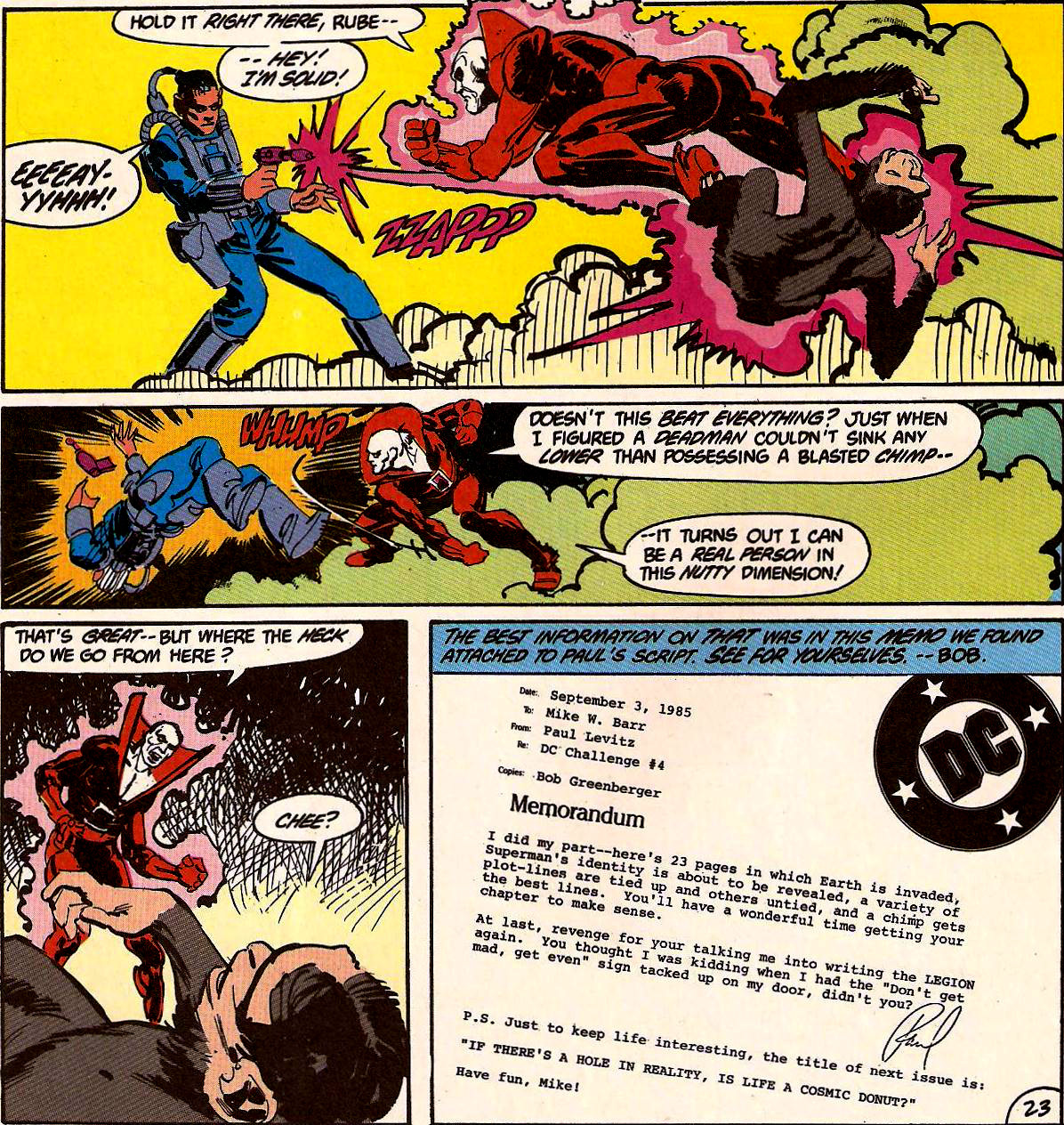
From DC Challenge #4 (1986)
Perhaps the pinnacle of this madness came in the series’ sixth issue. That’s when Albert Einstein showed up and began to play with the very fabric of space and time. Elliot S. Maggin wrote a story in which Einstein could jump through time at will thanks to the good doctor having cracked the unified field theory on his deathbed.
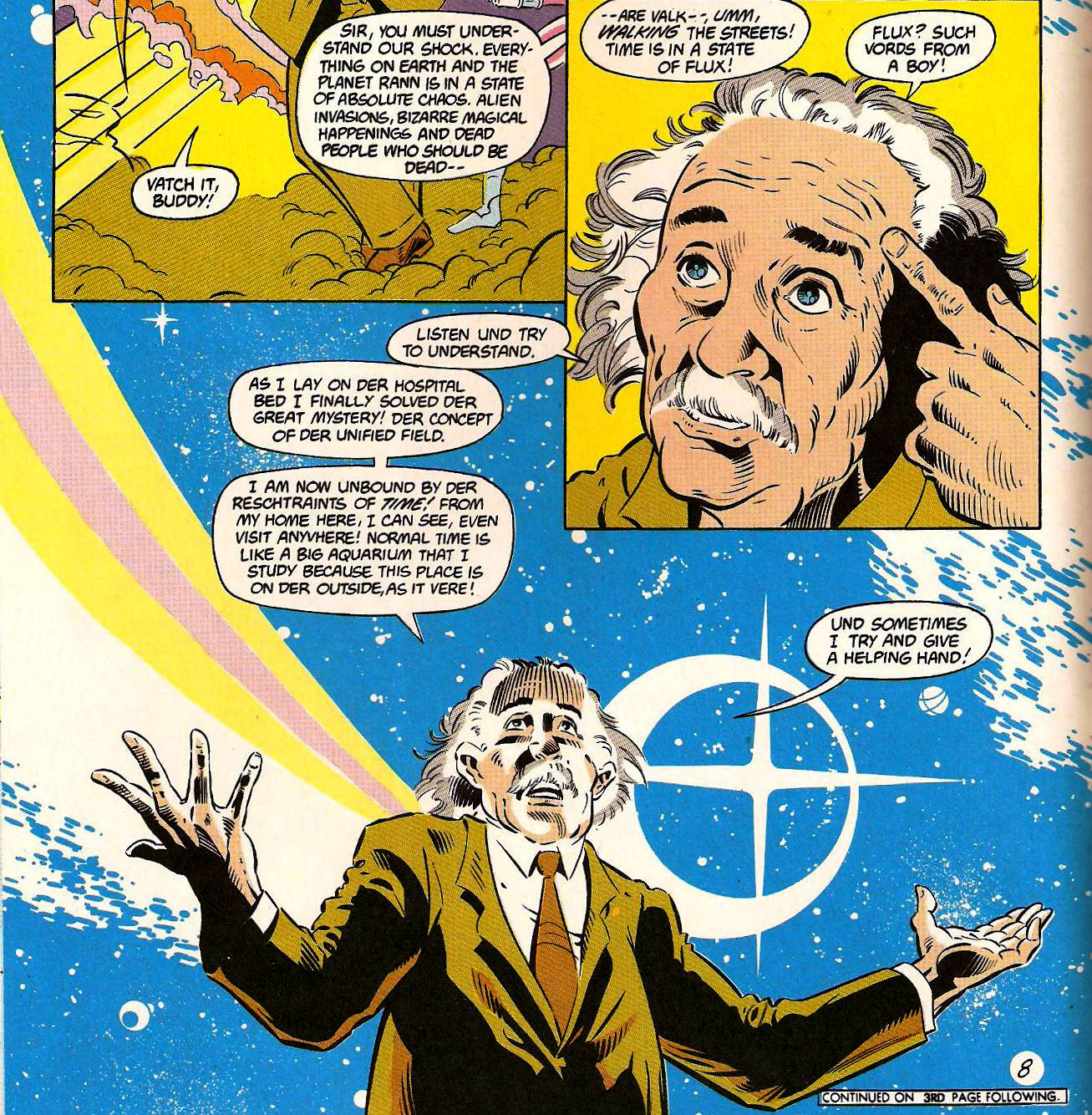
From DC Challenge #6 (1986)
Later writers claimed that this was a Guardian of the Universe pretending to be Einstein, but that explanation made even less sense than Einstein having supernatural powers. By the time the Joker began narrating the seventh issue in the series, written by Paul Kupperberg, nobody bat an eye. It simply wasn’t as weird as what came before.
When Gerry Conway’s eighth issue in the series was released, those pesky random numbers from the first issue were still being passed between writer to writer like the proverbial hot potato. Every once in a while, Batman would claim to have solved their mystery, but really, no one knew that Mark Evainer was going for when he introduced them. Gerry, it seemed, had enough and claimed they were vibrational frequencies that would destroy the earth.
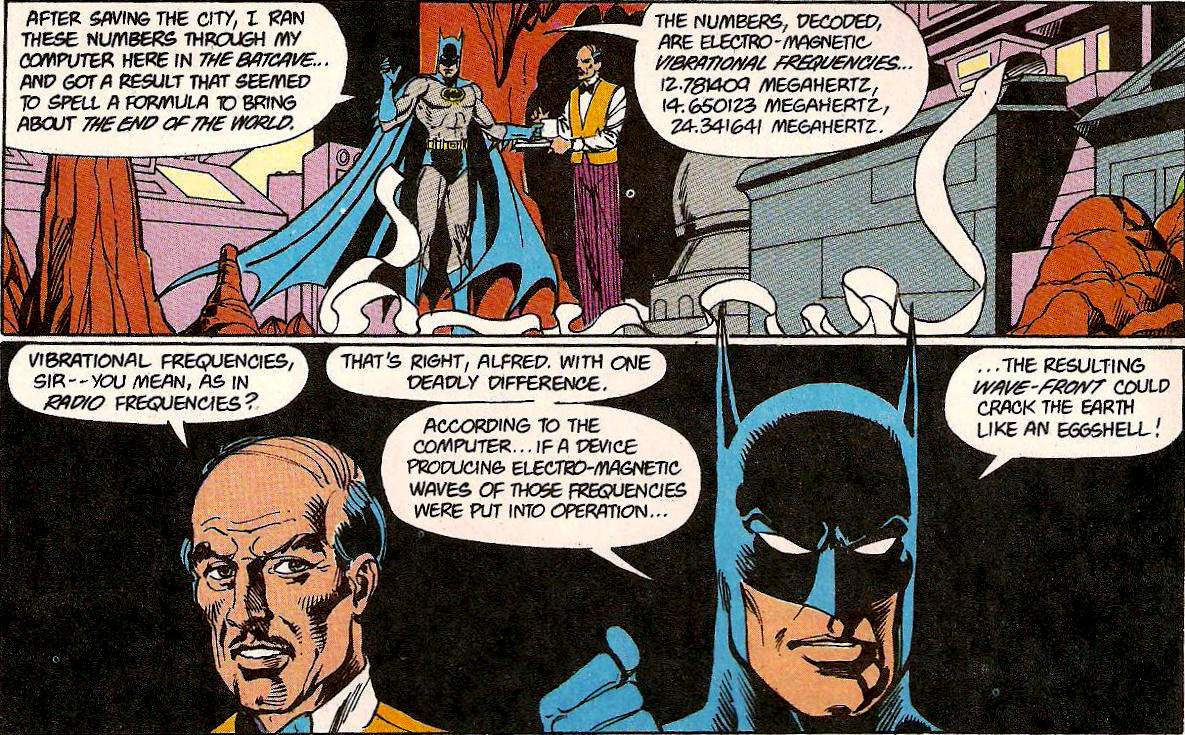
From DC Challenge #8 (1986)
After so much stalling in the previous issues by everyone else, you could almost see Gerry shrugging his shoulders as he wrote this scene. Sure. This is what those numbers mean. Why not?
Roy Thomas spent most of issue nine trying to make some sort of sense out of the insanity of the previous eight issues. He had the New God known as Metron spend an issue chatting with the Guardians of the Universe as they attempted to bring everyone up to speed. Jimmy Olsen and Adam Strange were stuck on an alternate Earth in which the Nazis won World War II. The Joker was suddenly a major player. Those weren’t aliens the readers had seen before, those were extra-dimensional djinns. It almost made one feel bad for Roy for attempting to make some sort of narrative sense out of everything.
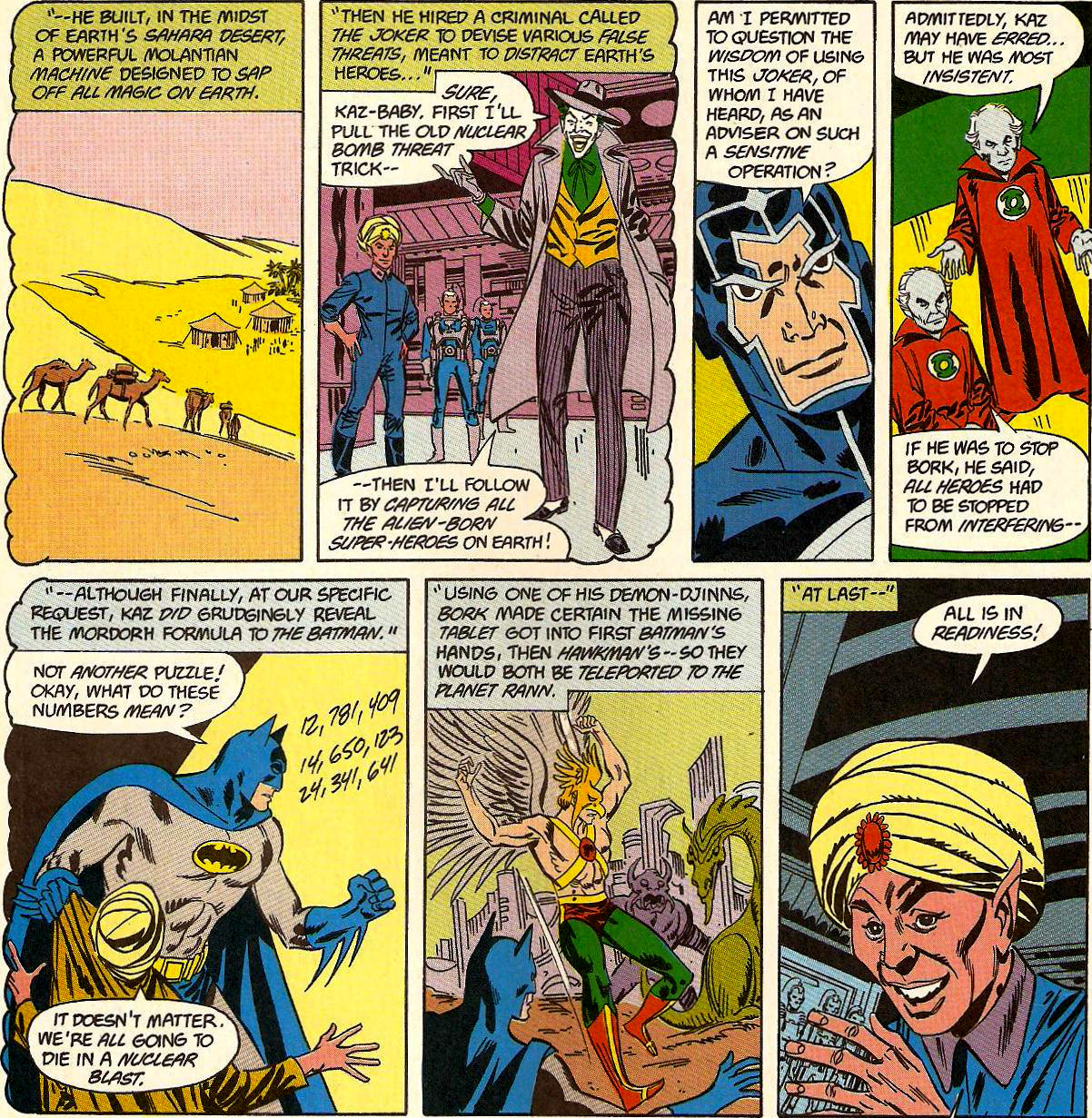
From DC Challenge #9 (1986)
Of course, it wasn’t just the writers who were participating in this story. In the penultimate issue, Marv Wolfman, who was recently wrapped up writing the equally massive and headache-inducing Crisis on Infinite Earths, and Cary Bates teamed up with Keith Giffen to create this chapter. During it, Giffen delivered some wonderful pages, including one in which the Spectre channeled power through Doctor Fate in a bid to keep Earth and the planet Rann from crashing into each other. Giffen nailed the page.
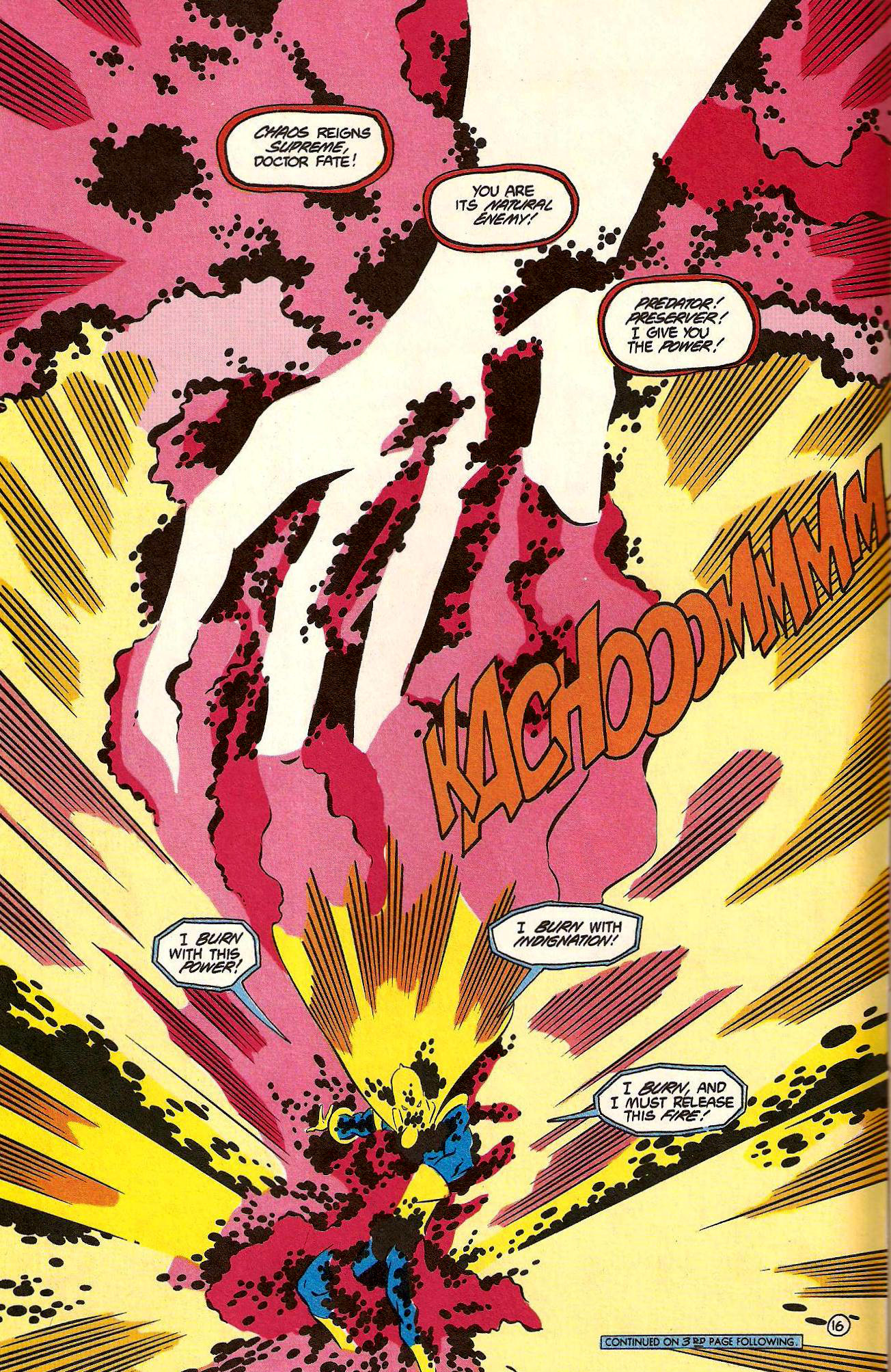
From DC Challenge #11 (1986)
Meanwhile, Marv and Cary finally solved the true mystery of those numbers given back in issue one. When the three numbers were added together they came to 51,773,173. This was a meaningless number until it was flipped upside down. Then, it sort of read “Eli Ellis.” Eli was a very minor character mentioned way back in Mark’s first issue and who, apparently, was a key component to unraveling the mess that was this series. Everyone since had ignored Eli since his introduction, meaning that Marv had to quickly write him back into the script. Also, Darkseid showed up and was revealed to be the series’ big villain.
In the final issue, Mark, Len, Marv, Roy, Gerry, and Dan Mishkin collaborated to try and make some sort of sense out of this whole thing. The heroes were as confused by the whole matter as many of the readers. Vibe was, of course, no help.
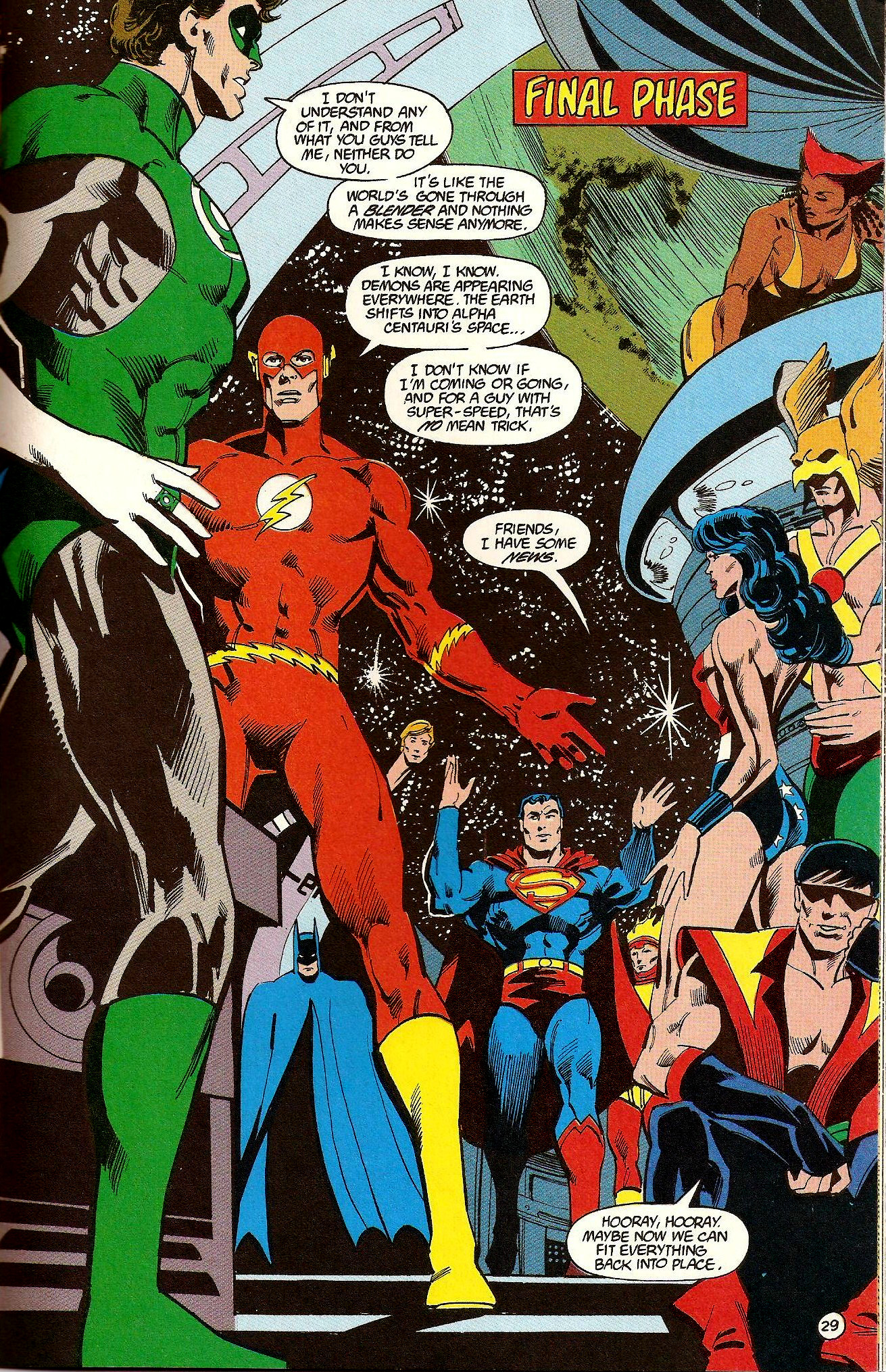
From DC Challenge #12 (1986)
If you sort of squint while you read this series, it makes some sort of sense. The plots are all wrapped up and nothing appears to be missing, except some sort of theme or meaning to the whole affair. But really, the plot is the least of the reasons why this series remains so interesting. The idea of so many writers and artists working together in an attempt to stump their friends and colleagues remains a great one. A crazy writing exercise paid for by a major comics publisher is rare and downright revolutionary. These creators got away with having fun on the company dime.
Seek this series out the next time you stumble upon it when you’re back issue bin diving. Prepare to scratch your head in confusion but the whole thing is so infectious in its “anything can happen” quality that it may just win you over. It certainly worked on me.
Jeff Reid doesn’t mind that this series isn’t in continuity. That makes it even more fun. Jeff discusses other fun things on Twitter.


I totally got a copy of this in a giant box of comics as a kid and don’t think I ever got around to reading it. Not sure if I have the whole run or not; I’ll have to go digging next time I’m visiting my family. This is the best backstory ever and I’m looking forward to more crazy people running comics in the future and allowing this to happen once again.
“…several writers escaped to the roof to get some fresh air.”
Riiiiiiight.
I’m pretty sure this is how Lost was written.
Hahaha, yeah I bet their “fresh air” was rolled in a joint.
This sounds both insane and amazing at the same time.
Jonah Hex time-travels, instantly pulls his gun. What’s he gonna do, shoot the future?
…
Hell, we all know he could and would.
Haha! I’d be more concerned if he didn’t.
If you read this as a sort of build up or companion to Crisis it make some sense in its craziness because reality would be breaking down all around them anyway so stuff is just getting weirder and weirder.
I got this comic in a big stack of them when I was a little kid and I never got around to reading it either. I probably thought that it was some kind of “educational” comic. A few months ago I found all of the issues in a quarter bin and I’ve been reading them here and there, they are insane, but fantastic. Especially the scene where Aquaman tears out a buzzard’s jugular with his teeth and drinks its blood so that he can survive in the desert.
That was, indeed, a Great Moment.
Thanks Jeff! I remember that post, and then much later actually reading the book. That’s what the New 52 is missing, superheroes drinking the blood of buzzards to survive. Every April WTF gatefold cover should have just shown the main character munchin’ on some buzzard gullet.
Why is this not given the Absolute treatment yet?
I remember when this first came out. DC was doing a lot of advertising for the DC Challenge and it sounded really fun. I bought the first few issues but was so confused that I stopped buying it (a 10-year old doesn’t have a lot money so every purchase counts).
This sort of sounds like a 52-prototype, which makes me want it. Unless it’s like “Brightest Day, then I don’t want it. Either way, I’ll look for. Good Article.
Hope to see a Millennium DC History someday and where the Evolution characters ended up after all that.
This template would later be used for the ABC series LOST.
I started reading comics shortly after the Crisis on Infinite Earths. This was one of those series for which I would jump into back issues bins and try and collect the whole series (this along with Who’s Who – I was a sucker for all the Maxi-Series from this era). What a trip this series was! You could feel each issue getting crazier and crazier! I loved the moment that Batman came up with his solution to the number problem… You knew the writer just decided to say “f- it” and make up his own solution! By that latter half of the series, the story was so off-the-wall as to be almost unreadable but I always admired the concept. Imagine if Grant Morrison, Geoff Johns, Scott Snyder, Jeff Lemire, and company got together and tried to do a series like this today…
Vorrin1,
Morrison did that to himself and the result was Final Crisis.